
Earth’s Amazing Giants: Tallest Mountain vs Deepest Ocean
On learningmole.com, we love exploring the wonders of the planet we live on. Sometimes we talk about animals, fish, plants, and butterflies. Other times, we talk about the wind, lightning, and thunderstorms. We may talk about small creatures such as insects or gigantic ones like dinosaurs.
But no matter how big something is, we must remember that it started out small. Then it grew bigger and bigger. An adult was once a baby. A baby was once a foetus. And a mountain was once a grain of sand just like a huge ocean was once just a teeny-tiny droplet of water.
Today we are talking to you about two giants of planet earth, the tallest mountain and its exact opposite, the deepest ocean.
The Tallest Mountain on Earth
There are a huge number of mountains on Earth. As a matter of fact, there are 1,187,049 mountains in the entire world. Some countries have so many mountains. The United States, for example, has 77,706 mountains. Other countries have no mountains at all just like Lithuania and Estonia in Europe.
Mountains help Earth stay stable. They are also important because they are a good source of freshwater which is needed for life. Besides, mountains are places where many animals and human communities live. They are beautiful as well which makes people want to visit them. This promotes tourism in countries with mountains.
A mountain usually has a steep, sloping sides, sharp ridges, a peak, or a summit. Mountains can be sandy, rocky, and snowy. They can also be volcanic.
To us, all mountains might just be huge and tall. But they do differ in height. The lowest mountain is called Mount Tenpō and is located in Japan. It is only 4.53 m high. On the other hand, the tallest mountain which is what we are discussing today is Mount Everest.
Mount Everest
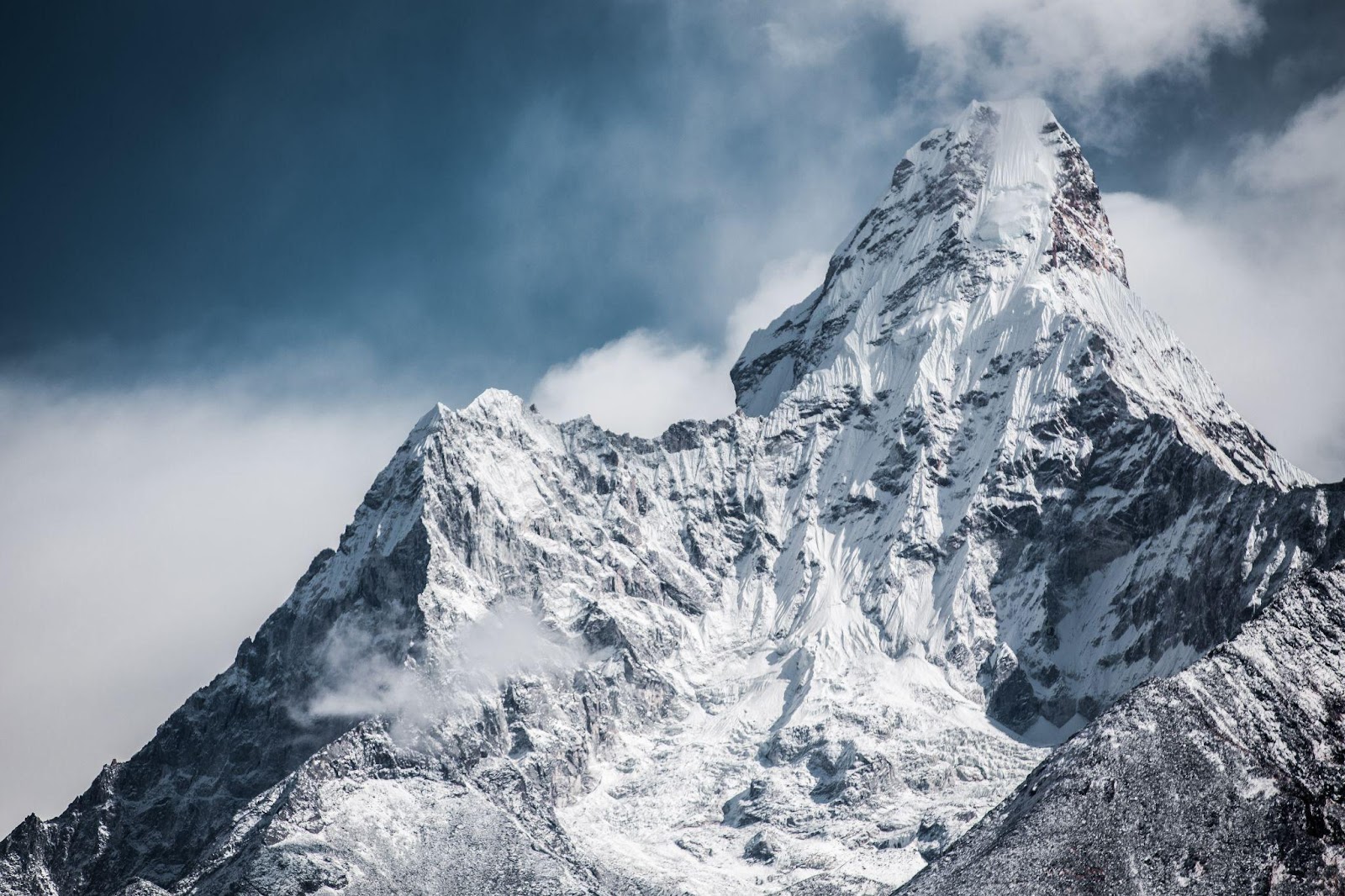
Mount Everest is the highest mountain above sea level. It is 8,848 m tall and is already a part of the Himalayas mountain range in Southern Asia. Mount Everest is shared between Nepal and China. The locals who lived around were familiar with the mountain. They used to call it ‘Goddess Mother of the World’ and sometimes ‘Peak of Heaven’.
Although it has been on Earth for the last 60 million years ago or so, the western world did not discover Mount Everest until 1852. That year, some surveyors were hired by the British government to draw a map of India, which was a part of the British Empire at the time.
As the surveyors were doing their job, they came across a mountain that was nothing like anything they saw before. Soon after, a British pilot named James Nicolson headed to the area where the mountain was discovered. Using an instrument called a theodolite, which assists in drawing maps, he made observations of the mountain from different locations.
With these observations, Nicolson could make calculations of the peak’s height. But all his calculations were inaccurate. In 1852, an Indian mathematician came up with more developed calculations and announced Mount Everest was the tallest mountain in the world. However, his calculations had to be verified many times, over three years until they were proven accurate.
Once the newly discovered mountain was officially announced the tallest in the world, the discoverers started thinking of a name for it. They first named it ‘Peak XV’ or ‘Peak 15’ as XV is the Roman number that equals 15. Then the Royal Geographic Society renamed the mountain ‘Mount Everest’ after Sir George Everest who was once the Surveyor General prior to the mountain discovery.
Characteristics
Mount Everest is not an abandoned rocky snowy mountain. On the contrary, many plants, animals, and even birds live there. For instance, some flowers named Arenaria grow on the mountain at a height of below 5500 m. Another plant called moss grows even higher on the mountain, around 6,480 m. These plants are pretty extraordinary because it is quite hard to live up there where it is freezing.
When it comes to animals, there is a variety of them living in the mountain as well. Some of these animals include red pandas, musk deers, wild yaks, black bears, and mountain weasels. Did you watch Kung Fu Panda 1? Remember Tai Lung? Tai Lung was a snow leopard and snow leopards live on Mount Everest. Besides, there are many other birds and insects too who live in the mountain.
Weather
Mount Everest’s temperatures range from month to month and from the base of the mountain to its summit. For instance, in winter (November to February) the temperature at the summit ranges from –30°C to –36°C and can sometimes drop to –60°C in January. In summer, which extends from June to September, the summit usually has a temperature of –20°C on average.
Mountaineers who want to climb Mount Everest are always advised to do that in spring and early summer and in autumn too. That directly translates to April, May, and June, then September and October. During these months, the weather is fairly suitable for climbing and not as freezing as in winter.
Ascending
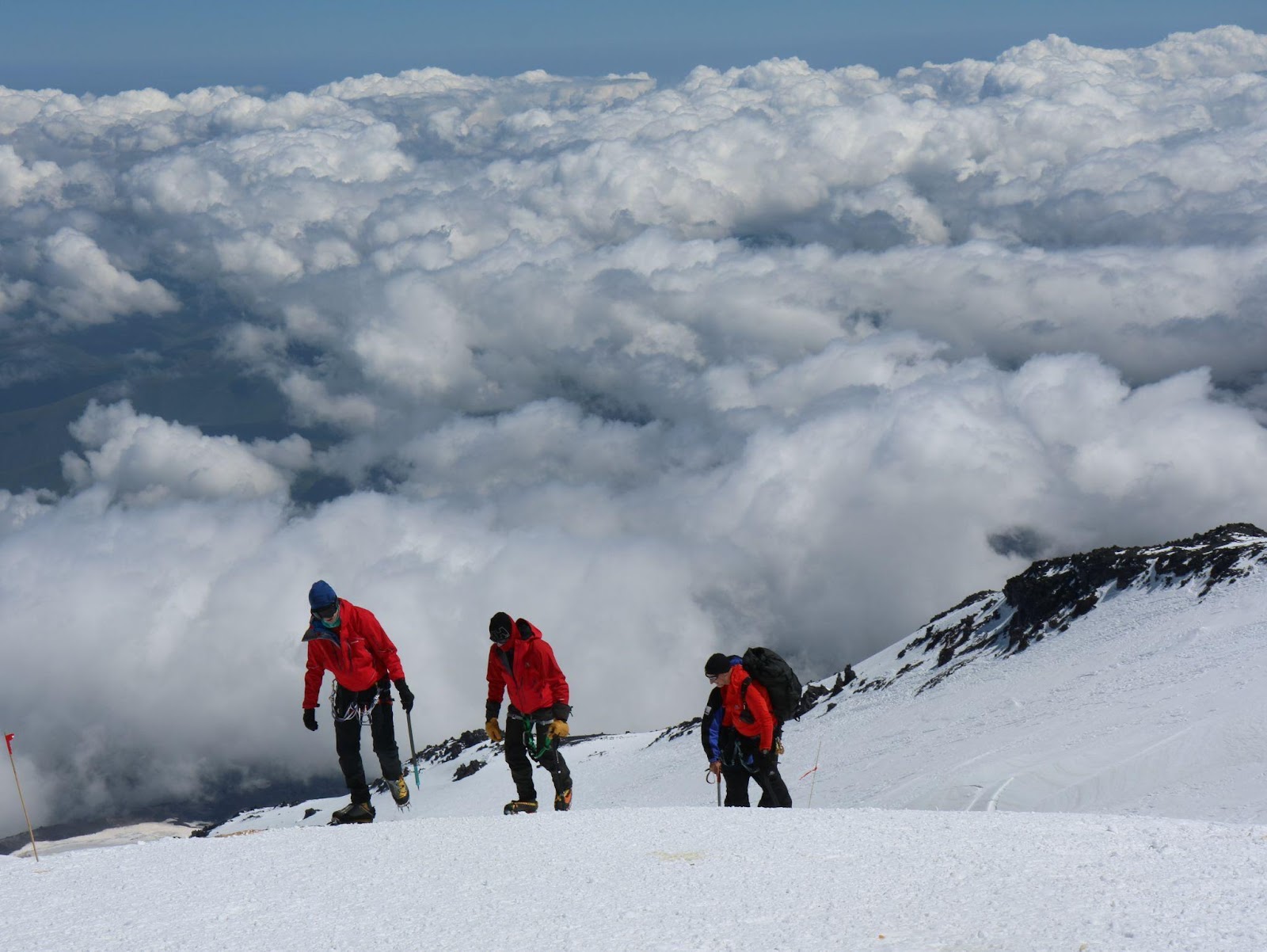
In the early 19th century, some mountaineers from Britain tried to climb and reach the summit of Mount Everest. However, they could not enter Nepal because the government did not allow them to. So they moved around and tried to get to the mountain from the Chinese side and they could.
Two British expeditions of different climbers successfully reached heights of 7000 m and 8320 meters respectively. Although they did not reach the summit, reaching that height alone was (and still is) a great achievement. At the time, the mountaineers’ community was looking forward to the first person who would make it to the summit.
So in 1924, the third expedition of two mountaineers named George Mallory and Andrew Irvine was launched in an effort to make the awaited achievement. However, that did not happen because the two mountaineers never returned. They just disappeared.
The mountaineers’ community was shocked and scared. Everyone wondered what happened to the two climbers and whether or not they could reach the summit. The last time both mountaineers were seen was when they were just 245 m below the summit. So did they make it?
So many expeditions went out there in the mountains searching for them. But all of them failed at finding anything except Andrew Irevne’s snow axe.
But in 1999, an American Science program called Nova and the BBC both sponsored an expedition to search for the lost pair. On May 1st, only a few hours after the expedition started, George Mallory’s body was found, mummified in the snow. Mountaineers from the expedition could recognize him from the name tag on his clothes.
On the other hand, Andrews Irvine’s body was never found. And the question of whether or not the two British mountaineers ever reached the summit is still unanswered.
However, the first known people to reach the summit of Mount Everest were the Nepali-Indian mountaineer Tenzing Norgay and Edmund Hillary, a mountaineer from New Zealand. Together, they went on an expedition in 1953, the year that marked the beginning of a new era of Mount Everest tourism.
As of 2022, 4000 people from different countries have successfully reached the summit of Mount Everest. Each year, around 700 to 800 people set off to climb Mount Everest. This is a large number of people given the many challenges that climbers encounter on their way up to the summit including the long period of time they spend in the cold weather hiking and climbing.
On average, climbers take around two months to reach the peak of Mount Everest. Miraculously, a Nepalese mountaineer named Pemba Dorje Sherpa could ascend from the mountain base to the summit in only 8 hours and 10 minutes on May 21st, 2004. He holds the Guinness Record as the fastest man to ever climb Mount Everest.
Permits
In order to climb Mount Everest, mountaineers have to get permits from the government of Nepal. However, not everyone is granted a permit because not everyone can climb the tallest mountain on the planet. Consequently, unless one cannot prove they are good climbers, they will probably get rejected.
The government of Nepal has even made the procedures more complicated to help reduce the number of deaths. Yes, people can potentially lose their lives while they are trying to reach the highest summit. In fact, 300 people are known to have died while climbing the mountain.
In May 2006, a British man called Myles Osborne and three other climbers were able to save a climber who was injured and almost dying in the snow. After two months of struggling with the weather fighting their way in the snow up the mountain, the team was only two hours away from the peak when they saw the injured climber.
The man was in a pretty bad situation. His ten fingers were already frozen and even bitten by the snow. He was not able to see properly or speak. He was hallucinating.
So instead of continuing their way up, the team turned their backs to the summit and hurried to rescue the man.
Challenges
There are many challenges that face climbers on their way up to the summit. If they are not well prepared or fit enough, they may face harsh problems and even face death.
The first harsh challenge is the freezing unpredictable weather. On Mount Everest, the temperature gets as low as –30°C and sometimes even below that. So climbers must wear proper suits and cover their hands, face, and feet with the right climbing gear. Otherwise, the freezing weather will damage their skin and the tissues of their hands, feet, face, ears, and lips.
Besides the freezing temperatures, the weather itself is pretty unexpected. All of a sudden, climbers may face snowstorms and strong winds that may blow them away. Then there is the risk of crossing Khumbu Icefall which is a huge glacier. What makes it dangerous is that it can crack and kill climbers unless they are very very cautious.
Another challenge is imposed by the low air pressure found in high altitudes. This means there is not much oxygen in the air. If the oxygen rate in the blood decreases, climbers would suffer from shortness of breath, blurry vision, insomnia, vomiting, headache, and overall exhaustion. So mountaineers must slow down while climbing to adapt to the lower oxygen levels.
Money-wise, climbing Mount Everest can be pretty expensive as well. First climbers have to buy climbing clothes and supplies and the necessary equipment. This can cost $8000 to $15000. Fully guided journeys cost $40000 to $65000 on average. Add in more money to cover visa and flight tickets to Nepal as well an internal flight from Kathmandu, the capital of Nepal, to Lukla which is the town from which climbers start their journeys.
Interestingly, another challenge that usually faces climbers is traffic, not that caused by cars like in cities but rather people traffic. Now, more people head to Mount Everest every year to see the world from above. This is definitely useful for Nepal as tourism flourishes, but it is not fun when you are 5000 m up in the mountain walking very slowly like a penguin stuck in a pack!
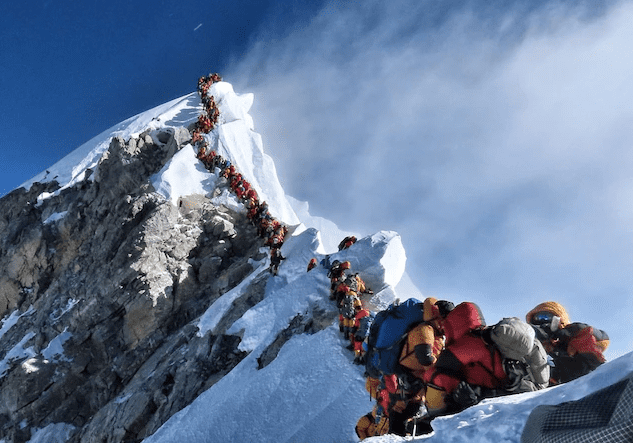
The Deepest Ocean on Earth
Every living thing is made of water.
Of the surface of Earth, 71% is covered in water. Only 3% is freshwater which all living beings need for life. The remaining 97% is saltwater completely unsuitable for drinking or growing plants.
All the water on Earth is classified into different bodies. Some bodies are saltwater such as oceans and seas. The rest are freshwater like rivers, streams, and glaciers. Streams are small rivers. Glaciers are usually found in the north and south poles. They are also freshwater but in the form of ice, huge bodies of ice. Glaciers also move.
Lakes are bodies of water surrounded by land from all directions. Most of the lakes are freshwater. However, there is a number of salt lakes around the world. The largest of them, for instance, is called the Caspian Sea in Iran. Although it is referred to as a sea, it is actually a lake.
Big saltwater bodies are called oceans. Smaller bodies are called seas. Seas are usually a part of oceans. They are connected to them. At the same time, seas are surrounded by land from other directions.
Take for example the Mediterranean Sea. It is surrounded by countries like France and Italy to the north and Egypt and Algeria to the south. But it is connected to the Atlantic Ocean through the Strait of Gibraltar, between Spain and Morocco.
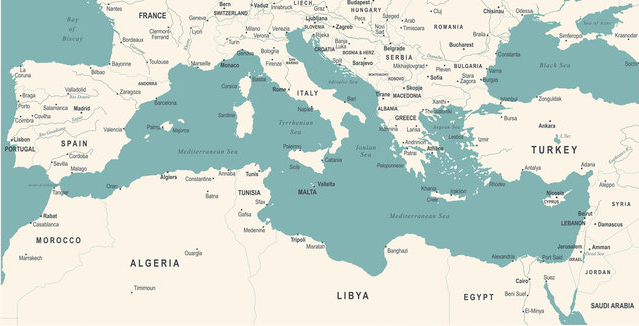
The biggest water body on Earth happens to be the deepest as well. It is the Pacific Ocean. And if Mount Everest is the land Giant, the Pacific Ocean is the water Giant. So let’s learn some interesting facts about it.
The Pacific Ocean
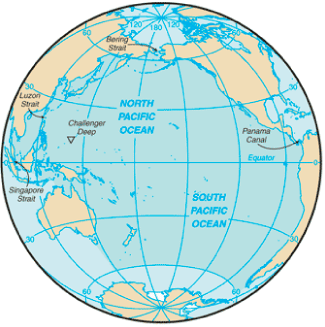
Being much older than Mount Everest, the Pacific Ocean formed 750 million years ago.
Among the five oceans found on the planet, the Pacific Ocean is the largest and deepest of them all. Alone, it comprises 32% of the surface area of Earth and 46% of all the water on it. That is nearly half the water on Earth with a volume of 710,000,000 cubic kilometers.
The Pacific Ocean is 165,250,000 square kilometers in area. It stretches from the Arctic Ocean in the north to Antarctica in the south. In the west, there are Australia and Asia and in the east there are North and South Americas. Some of the countries that border the Pacific Ocean are Japan, South Korea, Colombia, Singapore, Guatemala, Thailand, and Russia.
Speaking of depth, it changes from one location to another. The average depth of the Pacific Ocean was found to be 4280 meters. However, the deepest point, called the Mariana Trench, is 10,911 meters below the surface of the water. That is pretty hard to imagine but you can be assured that it is tremendously deep.
The Mariana Trench is located in the north west of the ocean, somewhere between Guam and the Philippines.
Inhabitants
Due to its tremendous area, the Pacific Ocean happens to be home to many distinctive inhabitants such as marginal seas, islands, lagoons, atolls, mountains, volcanoes, seamounts, and an incredibly abundant marine life.
First and foremost, marginal seas. These are seas that are connected to the ocean from one side and bordered by land from the other side. There is a large number of marginal seas in the Pacific Ocean, always found near the land. On top of these marginal seas are the sea of Japan and the Chilean sea near the border of South America.
An island is a piece of land surrounded by water from all directions. Such land is actually the ocean floor rising above the surface of the water.
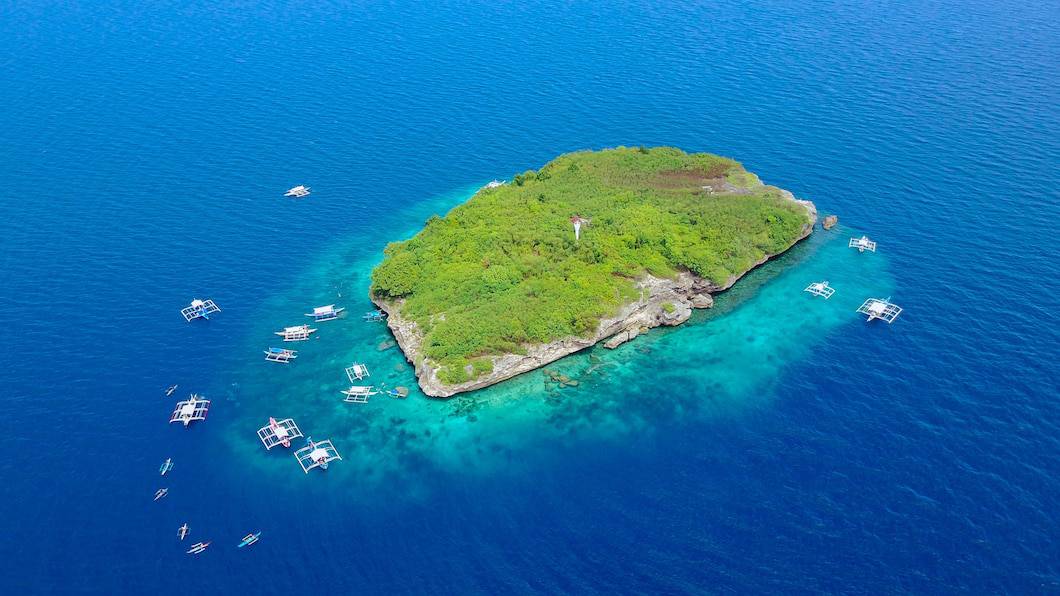
Islands can be of any size. The smallest island in the world is Nauru in the Pacific Ocean which covers a land area of 21 square kilometers. The largest island; however, is outside of the Pacific Ocean. It is Greenland. And it is really huge; around 2,130,800 square kilometers in area.
In the Pacific Ocean alone, there are 25,000 islands. Some of them are countries such as New Zealand and Fiji. Other islands are parts of other countries such as Hawaii.
Besides islands, the Pacific Ocean also has lagoons and atolls. A lagoon is an area of saltwater separated from the sea or ocean by a strip of sand or coral reefs. We can think of lagoons as lakes. The only difference is that a lake is surrounded entirely by land. Yet, lagoons are surrounded by narrow land which in turn is surrounded by seawater.
When the strip around the lagoon is made of coral reefs, it is then called an atoll. There are around 440 atolls in the Pacific Ocean. Atolls can be found where the ocean water is warm, not cold.
Interestingly, the Pacific also has mountains. Well, there are the mountains we are all familiar with, the ones we find above the water and there are underwater mountains called seamounts. Such mountains were originally volcanic but turned into seamounts during eruptions.
The tallest seamount in the Pacific Ocean is in Hawaii. It is called Mauna Kea Volcano. It starts from the ocean floor at a depth of 6000 meters and extends above the water for 4000 meters more. So in total, Mauna Kea is 1000 meters tall. That is even taller than Mount Everest!
On the other hand, the Pacific non-seamount mountains or the Pacific Coastal Ranges are found stretching along the North American Pacific coast, from Canada to the United States. This mountain range is 8850 km long.
Discovery
In order to discover an unknown body of water, explorers have to move from land and navigate through the water they are familiar with until they reach new water. That is exactly what happened with the Pacific Ocean.
In the sixteenth century, exactly in 1513, Spanish explorer Vasco Núñez de Balboa was able to cross Panama and reach the North Pacific Ocean. He named it the Sea of the South because the ocean was in the south of Panama where he discovered it for the first time.
But in 1520, another explorer named Ferdinand Magellan but from Portugal this time could cross this newly discovered ocean from the very east to the west. He was trying to reach Spices Island in Indonesia, and he did. Because his expedition mostly sailed in calm water, he called the ocean the Pacific which means peaceful.
However, the ocean was known for centuries as the Sea of Magellan in honor of its explorer.
Maybe Ferdinand Magellan was lucky to sail through the ocean peacefully. However, the Pacific Ocean is not peaceful most of the time. In fact, islands in the ocean often experience strong storms. The ocean is also full of volcanoes that trigger earthquakes and tsunamis. This tells us how powerful the largest and deepest ocean is.
After Ferdinand Magellan explored the Pacific, so many other navigators from countries like Russia, Denmark, France, and Britain started to cross it as well. Some of them even started to colonize islands in it.
Features
Since the Pacific Ocean extends over a large area, it is true to say that the surface water temperature differs from one area to another. Such temperature ranges from –1.4°C in areas near the North Pole to 30°C when getting closer to the equator.
Salty water also varies. For example, water is not that salty near the equator. That is because it always rains there. The freshwater from the rain reduces the amount of salt in seawater.
Although water is transparent, it appears blue in the Pacific Ocean. This is due to how the water reacts with sunlight. To understand this, we need to free some room for a tiny physics fact.
Light consists of seven colors: red, orange, yellow, green, blue, indigo, and violet. This is called the light spectrum. When sunlight hits the ocean surface, seawater absorbs the colors in the red parts of the spectrum and reflects the colors in the blue parts. That is why we see the ocean blue.
Economy
The Pacific Ocean greatly influences the economic systems of the countries and islands that happen to be either in or bordered by it. Many countries’ main source of food is fishing. Other countries extract minerals and fossil fuels such as petroleum and natural gas as well as pearls.
First, fishing. The Pacific Ocean especially on shallow shorelines is abundant in different types of edible as well as expensive fish such as herring, salmon, sardines, snapper, swordfish, tuna, and shellfish. Providing food already, fish are also important for trade when they are sold to other countries.
Tourism is another sector that the Pacific Ocean influences. Tourists who travel across the globe to relax on the sunny beaches, dive in the clear water, and enjoy the captivating coral reefs provide sources of income that help the economy flourish.
Human Activity
The Pacific Ocean has always been so generous with humans. It provides a way to travel from east to west and vice versa. It has thousands of islands that people can travel to. It is home to the fish which we consume and the fuel we need to run our cars. However, we have just been taking advantage of and badly treating it.
The Marshall Islands as well as many other ones in the Pacific Ocean have been used as sites for testing nuclear weapons. This lasted for 16 years from 1946 to 1962. Unfortunately, the great heat and radiation from the weapons had devastating consequences on the environment.
Some islands vaporized. They completely disappeared. Other islands were extremely badly affected. People who were exposed to the radiation were poisoned. Many suffered from cancer. Even babies were born defective.
In addition, when radioactive waste is dumped into the ocean, it kills marine animals and strangely changes the nature of the newborn fish. This has been happening since 2011 when the Fukushima power plant exploded in Japan.
Besides nuclear waste and radioactive radiation, humans have been treating the Pacific Ocean as a great trash bin. For a very long time, garbage has been dumped into the ocean. It now covers a large area that is three times the size of France and comprises 80,000 tons of plastic materials floating in the ocean and suffocating turtles and other fish.
On the other hand, many of the countries in or bordered by the Pacific Ocean treat it badly even though they do not test any nuclear weapons. Those countries, unfortunately, threaten the marine life of the ocean by overfishing. They take so many fish out of the ocean at once that there are very few of them left to reproduce.
Overfishing also threatens the life of many other fish too. This usually happens by creating an imbalance in the food web.

Take tuna for example. Sharks and killer whales feed on tuna. Tuna feed on crustaceans and squids. If a country takes so many tuna at once, sharks and whales will not find enough food to eat. This can result in many of them starving. On the other hand, there will not be many tuna left to consume squids. This will cause their numbers to grow dramatically.
Conclusion
The Earth’s giants are extraordinarily unique and awe-inspiring.
Mount Everest and the Pacific Ocean rank first in size, height or depth, and greatness. Ever since they were discovered, both have become of vital importance to the world. Whether people are traveling to summit Everest or relaxing on the golden sands of a Pacific island, they influence tourism and inspire many others to have extraordinary experiences.
In this article, we have discussed some important facts about Mount Everest, when it was discovered, how its height was measured, and who summited it for the first time. Then we learned the process mountaineers go through to start the climbing journey as well as the challenges they have to prepare for.
Secondly, we discussed Earth’s second giant, the Pacific Ocean. We went through how it was discovered, where it got its name, as well as its various inhabitants of countries, seas, islands, atolls, lagoons, mountains, volcanoes, and seamounts.
Finally, we learned how humans have been mistreating the Pacific Ocean and how this seriously threatens the life of the creatures that live under its surface.
Why not subscribe to our LearningMole Library for as little as £1.99 per month to access over 1300 fun educational videos.


Leave a Reply